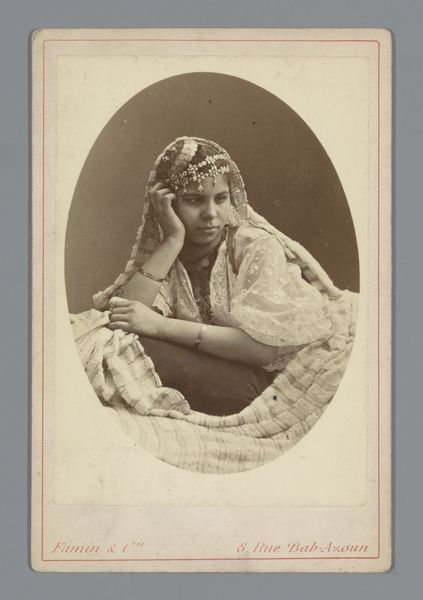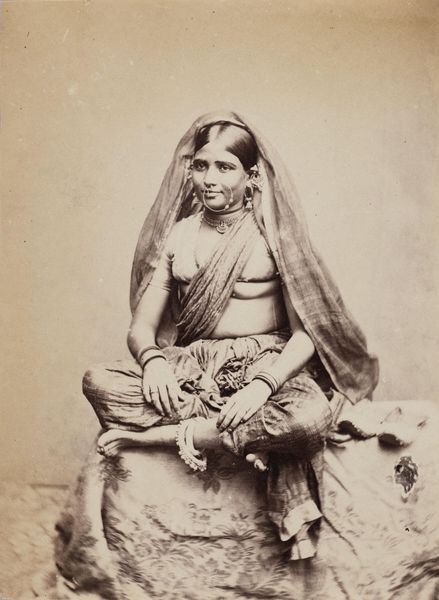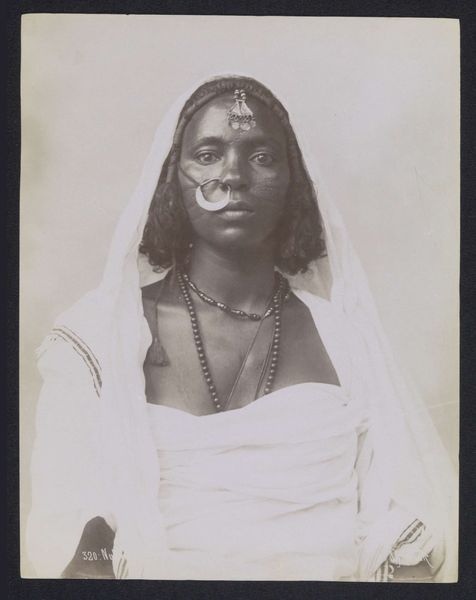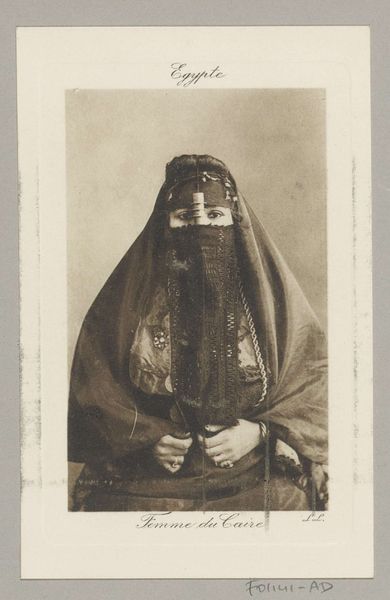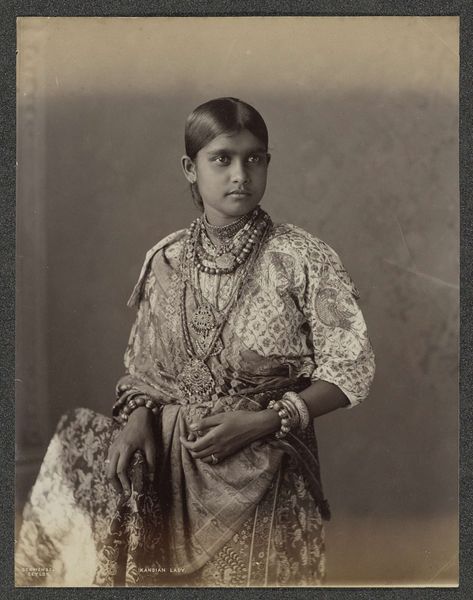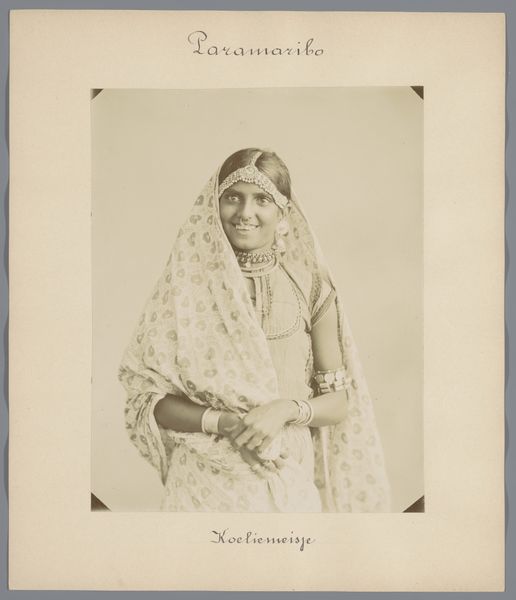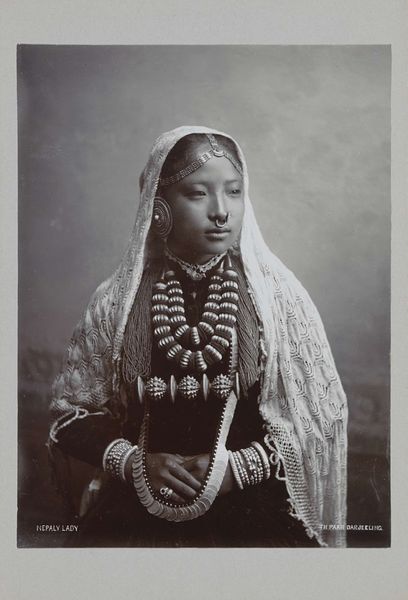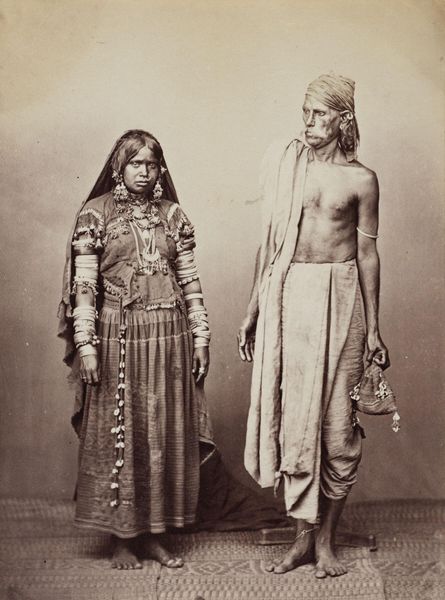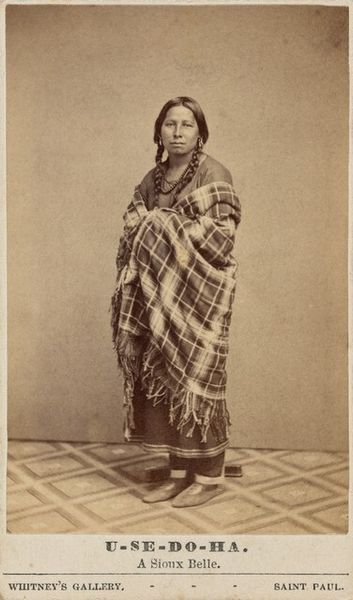
#
wedding photograph
#
charcoal drawing
#
charcoal art
#
portrait reference
#
pencil drawing
#
framed image
#
yellow element
#
portrait drawing
#
portrait art
#
fine art portrait
Dimensions: height 95 mm, width 57 mm
Copyright: Rijks Museum: Open Domain
Curator: Let’s spend some time with this photograph, "Zittende vrouw," placing its creation somewhere between 1860 and 1890, attributed to Woodbury & Page. Editor: There's a stillness in this portrait that strikes me. The texture of the fabrics, even in monochrome, suggests such intricate weaving, almost as though one could reach out and feel them. Curator: It’s more than just an image; it's a study of colonial Indonesia through a Western lens. This firm, Woodbury & Page, dominated the commercial photography scene there for decades. Think about who gets represented and how. Editor: Precisely! And the labor involved! Those garments, probably batik, speak to countless hours of skilled work by Indonesian artisans. How were these processes impacted when photographic studios sprung up, influencing both local and global perceptions? Curator: The sitter is an enigma. Is this a commissioned portrait reflecting status, a cultural document, or a performance of identity meant for a specific audience, back in Europe, perhaps? There is that object she holds; what is its significance? Is it simply an attribute for the picture? Editor: I think, yes, that object tells its own material history, even if we don't know exactly what it signifies. The clothing, the pose—these are manufactured representations. How might this woman have wished to be perceived versus how she *was* perceived through that colonial photographic process? Curator: Absolutely. And let’s remember these studios were businesses. They thrived on a certain visual language, often exoticizing their subjects. Photography played a huge role in constructing and circulating ideas about race and culture. Editor: Which is why understanding the process of how these images came to be—the social structures and economic forces that shaped them—is critical. It transforms a pretty picture into a critical investigation. Curator: Indeed. Looking beyond the surface, the very act of creating and disseminating this photograph had ramifications in defining colonial power structures and visual tropes that linger to this day. Editor: A moment frozen in time, ripe with the untold stories of production, representation, and material culture. Thank you.
Comments
No comments
Be the first to comment and join the conversation on the ultimate creative platform.

